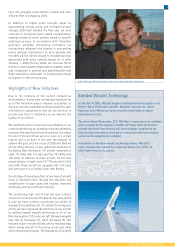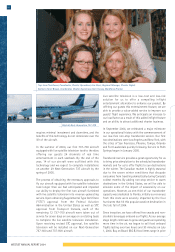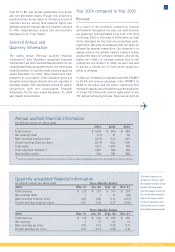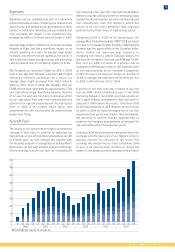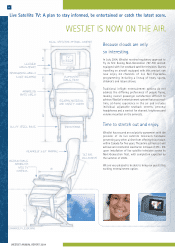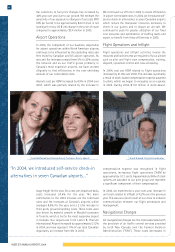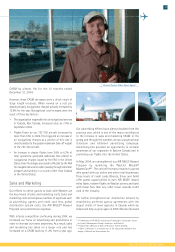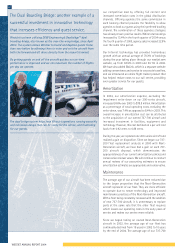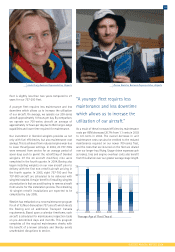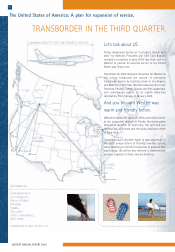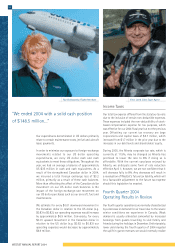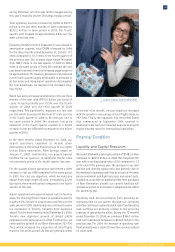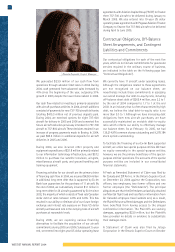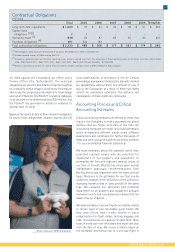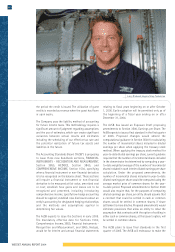Westjet 2004 Annual Report Download - page 29
Download and view the complete annual report
Please find page 29 of the 2004 Westjet annual report below. You can navigate through the pages in the report by either clicking on the pages listed below, or by using the keyword search tool below to find specific information within the annual report.
WESTJET ANNUAL REPORT 2004
Linda Craig, Business Representative, Airports Darren Kooistra, Business Representative, Airports
29
fleet is slightly less than two years compared to 27
years for our 737-200 fleet.
A younger fleet requires less maintenance and less
downtime which allows us to increase the utilization
of our aircraft. On average, we operate our 200-series
aircraft approximately 10 hours per day. By comparison,
we operate our 700-series aircraft an average of
approximately 12 hours per day due to their longer-range
capabilities and lower time required for maintenance.
Our investment in blended winglets provides us not
only with fuel efficiencies, but also maintenance cost
savings. This is achieved from reduced engine wear due
to lower thrust/power settings. In 2004, 20 737-700s
were removed from service for an average period of
seven days each to permit the retrofitting of blended
winglets. Of the 20 aircraft modified, nine were
completed in the fourth quarter. In 2004, Boeing also
began installing winglets on our new aircraft prior to
delivery with the first non-retrofit aircraft arriving in
the fourth quarter. In 2005, eight 737-700 and five
737-800 aircraft are scheduled to be delivered with
winglets installed. A major benefit of installing winglets
at production is that we avoid having to remove aircraft
from service for this installation process. The remaining
10 winglet retrofit installations are expected to be
completed by July 2005.
WestJet has embarked on a new maintenance program
for all of its Next-Generation 737 aircraft which meets
the Boeing and all additional Transport Canada
requirements. Based upon a calendar timeframe, each
aircraft is scheduled for maintenance inspection tasks
on pre-determined days and months. This program
completes all the required maintenance checks with
the benefit of a known schedule and thereby avoids
unscheduled disruptions to service.
As a result of these increased efficiencies, maintenance
costs per ASM decreased 20.7% from 1.1 cents in 2003
to 0.9 cents in 2004. The overall decrease in unit
maintenance costs can also be credited to the reduced
maintenance required on our newer 700-series fleet,
and the costs that are incurred on the fleet are diluted
over our longer-haul flying. Usage-driven expenses such
as brakes, tires and engine-overhaul costs also benefit
from this dilution over our greater average stage length.
“A younger fleet requires less
maintenance and less downtime
which allows us to increase the
utilization of our aircraft.”
2000 2001 2002 2003 2004
Average Age of Fleet (Years)
0
5
10
15
20
25 23
20
15
12
10


